Four Best Exercises
In this article, we’ll look at how to do master studies for pen and ink drawing and put it into practice with four different exercises.
Disclosure: Some of the links on this page are affiliate links. I earn a reward or small commission when you use those links at no cost to you. Read more about the Affiliate Disclosure on the Terms page.
What is a Master Study?
A master artist is someone who is considered to have reached a high level in their art practice.
A master study is seeking to understand the process and decisions made by the master in an effort to improve results in our own works.
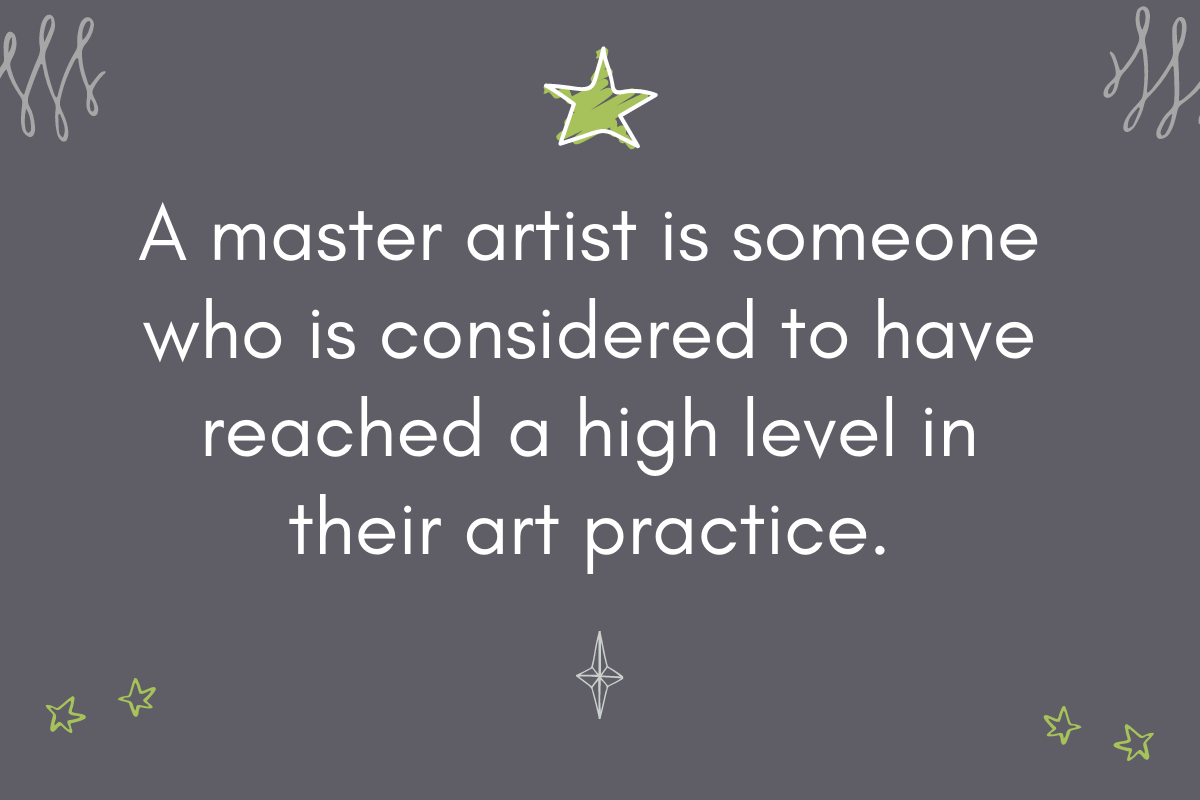
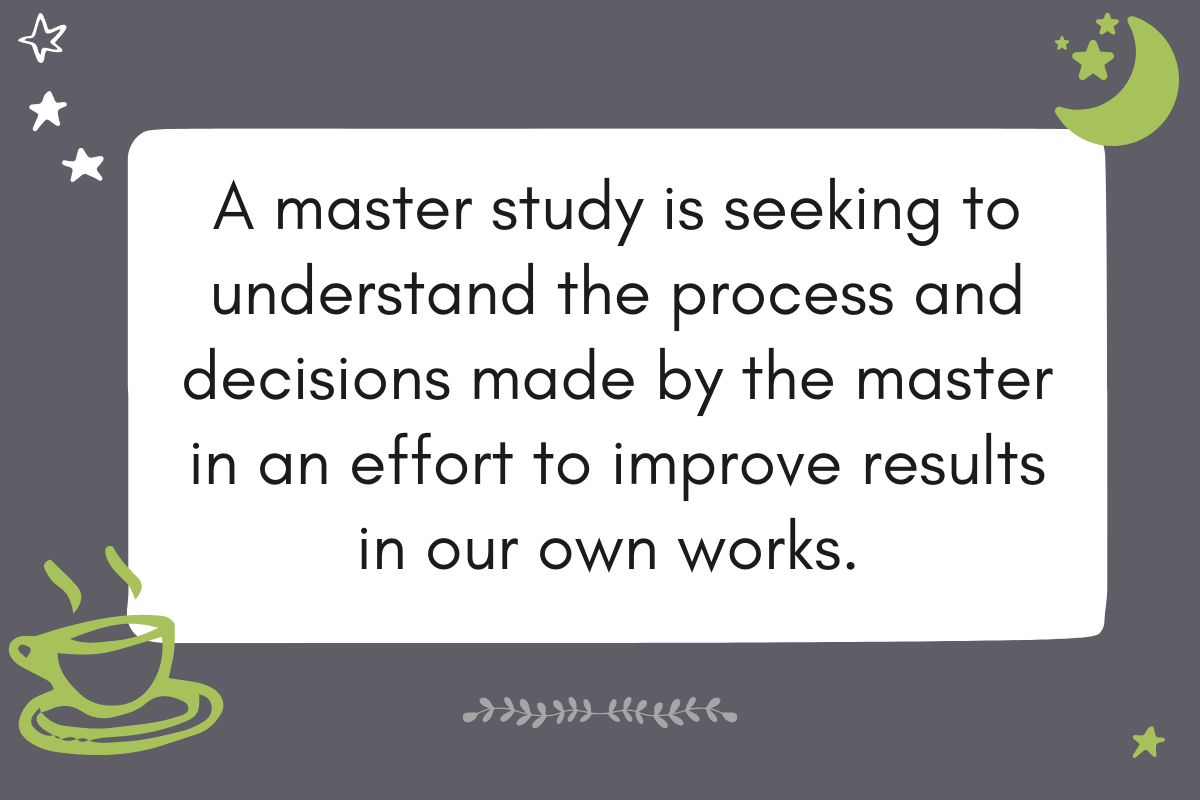
When I started taking my inking more seriously, the research I did all pointed to the importance of choosing a range of several artists.
This matters because the purpose is to inform our own methods, not to unintentionally become a copycat of a single style in particular.
At first, I gravitated toward studying artists with esthetics that I wished to emulate in my own work.
Over time, I broadened the spectrum of whom to study as my observation skills evolved. I began to notice different things.
I study masterworks from an admiration standpoint, with one question in mind:
What do I need to focus on at this stage of my art journey, to eventually reach a level of skill that resembles something masterful?
The artists you choose to study can be from the past or the present. I lean toward a 40/60 split between the classics and illustrators whom I currently follow on social media.
The more I learn about pen and ink, the more my appreciation deepens for the accomplishments of other artists.
Who are Your Influences?
In terms of subject matter, if you’ve been following my work on Instagram, you’ll have noticed that my gallery is primarily filled with black-and-white line drawings of birds framed in botanical motifs.
In my linework, you’ll notice influences from the turn of the 20th-century classics such as Joseph Clement Coll, Charles D. Gibson, Bernie Wrightson, and Franklin Booth.
Less obvious is my fascination with comic arts, bandes-dessinée, manga & animé. To name a few, I particularly enjoy the works of Katsuya Terada, Shin-ichi Sakamoto, Mœbius, Matías Bergara, Grzegorz Rosinski, Mike Mignola, Arthur Adams, Barry Windsor-Smith, Yusuke Murata, Naoki Urasawa, Takehiko Inoue, and Kentaro Miura.
Who are your influences?
In case you didn’t see your favourite, I’m just scratching the surface: there are countless more on my ‘wow list’.
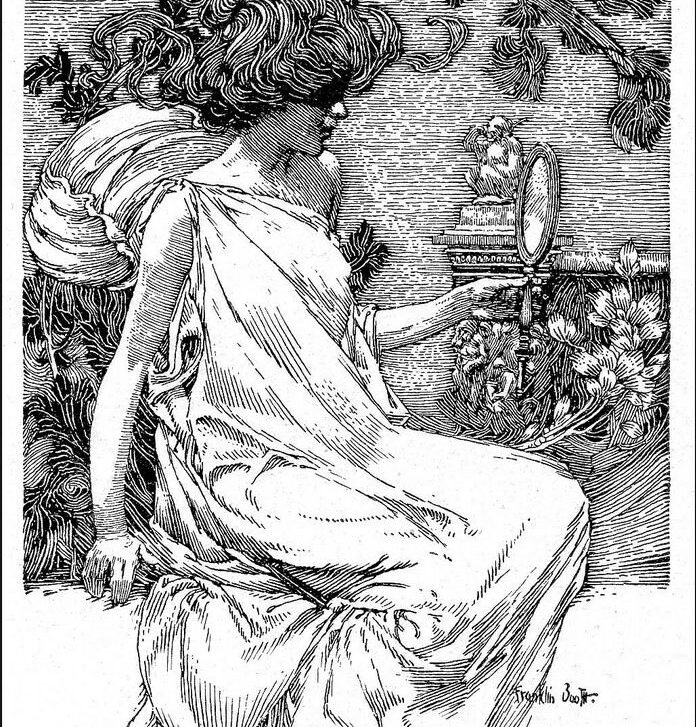
Master: Franklin Booth
Apart from being exceptionally good at line work, these masters all have one thing in common: none of them are renowned for their drawings of birds framed in botanical motifs.
My point is that the subject itself (the topic drawn) matters less than we would assume.
What we are developing in a master study are these key skills:
- observation
- decision-making
- problem-solving
- visual communication
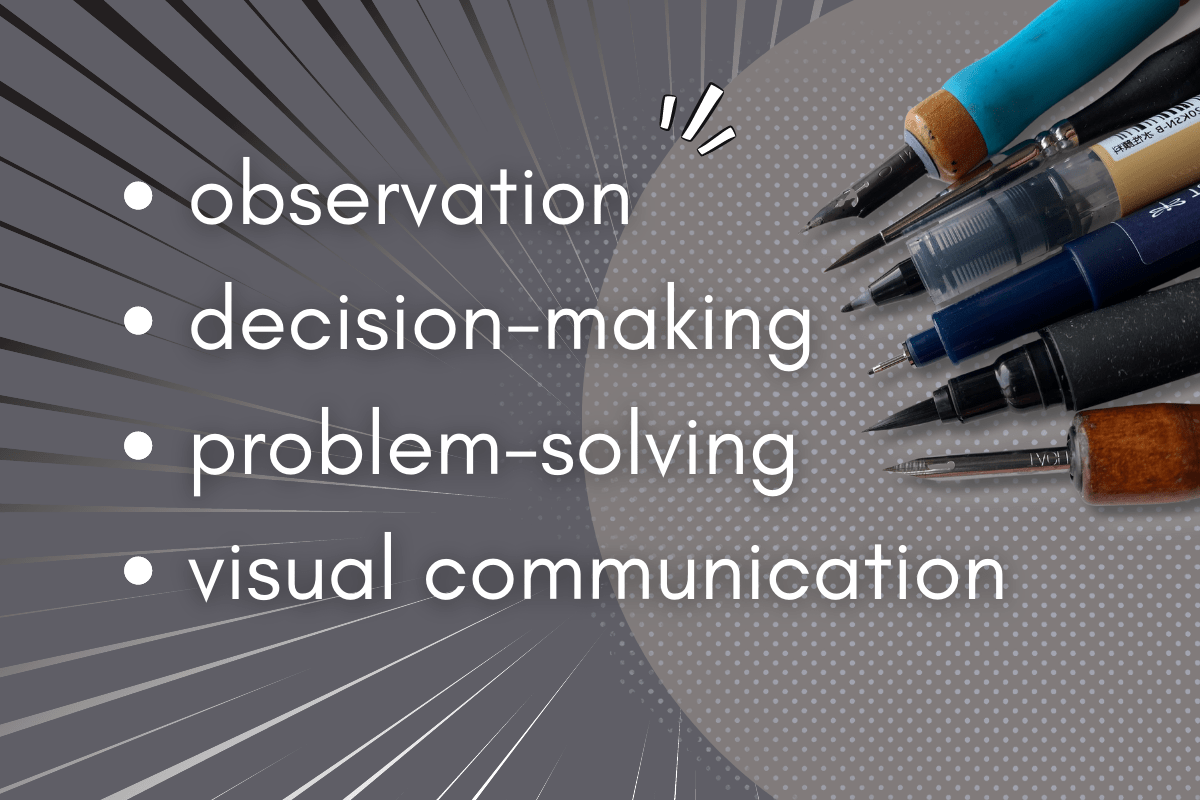
And of course, our technical skills will benefit from a higher volume of practice.
Steps to a Master Study
The first step to a master’s study is to self-assess our own work.
Determine which of the Fundamentals you most wish to progress on. For myself, it was line technique and shading.
Having objectives in mind prior to looking at masterworks will keep our focus in a productive mindset.
Looking at masterworks can feel intimidating.
By keeping a narrower focus, such as concentrating on one-to-three Fundamentals at a time, you can target the observations you make within your learning objectives.
For example, let’s observe Kentaro Miura’s work:

Here, looking at how Miura did this character’s hair (Farnese de Vandimion), using gapped parallel lines. The linework communicates the sheen in Farnese’s fair hair.
After observing Miura’s mark-making, I practiced those marks by drawing similar hair.
In this drawing, here I’m imitating (and adapting) what I observe and learn from the decisions Miura made: how he weighted, spaced, gaped, angled, and tapered the lines to communicate the sheen in the character’s fair hair.

The next step is to apply the same technique I used for that hair to my typical subject matter. I use comparable strokes on a botanical motif to replicate the same effect of the sheen on a fair lily.
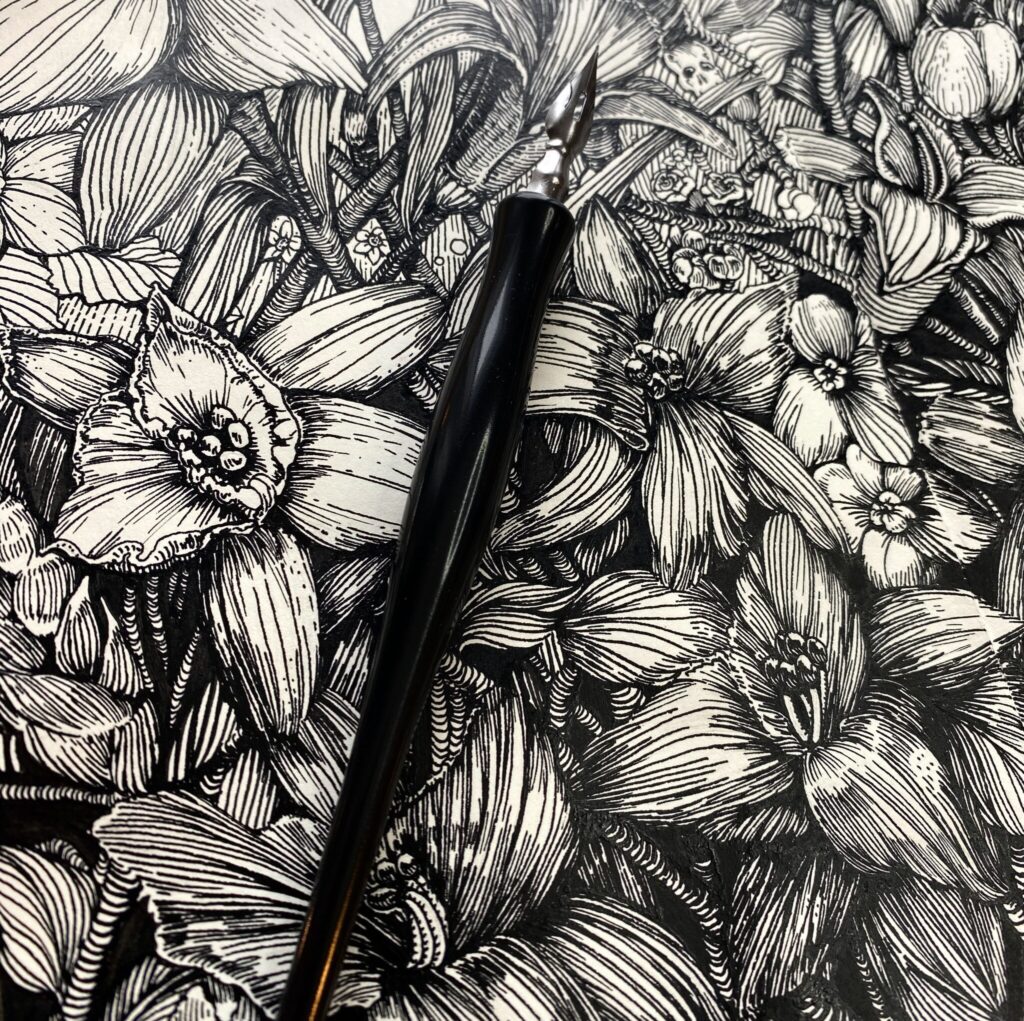
Here, I self-assessed my botanical work of this dip pen drawing in my sketchbook. I compare my strokes against Miura’s to see if I achieved an equivalent effect.
Did I successfully communicate the sheen in the fair lily?
If not, then I have some problem-solving to do. And therefore, repeat the cycle:
- observe
- imitate
- apply
- assess
… until I’m satisfied.

Master Study Exercises
Exercise 01 – Observe
Spend time, a minimum of 30 minutes, looking at several masters’ pieces.
While keeping your objectives in mind, take notes of what is catching your attention, and why.
Here are examples of probing questions for objectives related to the execution of the technique:
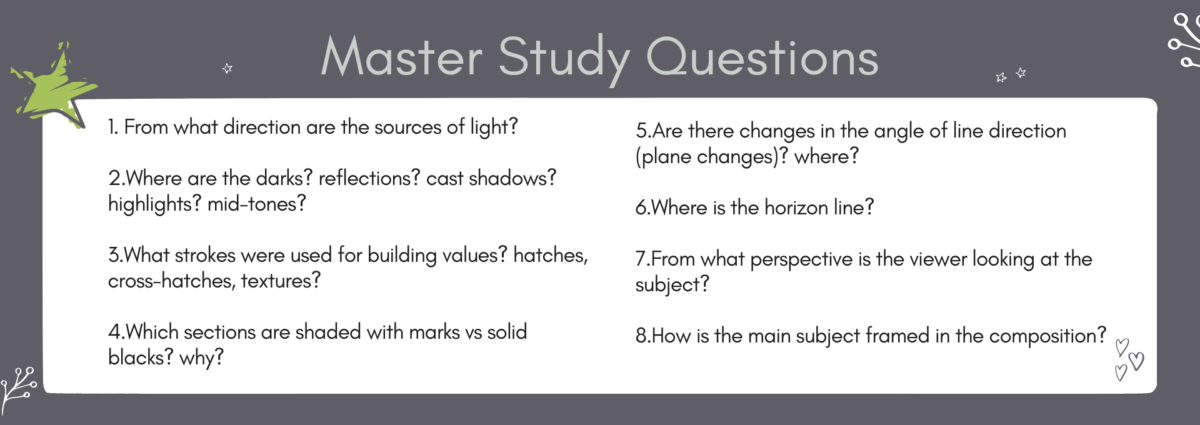
Looking at the scene (below) of Zodd and Skull Knight, I’m noting a source of light coming from behind on the righthand corner.
Zodd’s massive frame casts a shadow on Skull Knight.
The viewer is looking at the scene from below which makes the characters more imposing.
The dynamic strokes in the background environment curve at the same angle.
Both subjects are framed in a contrasting white light, fading from light to dark values.

Exercise 02 – Copy
Copying helps to further understand how the master made decisions through imitation. Copy one masterwork per objective(s).
Below are examples of my sketchbook drawing studies with pen and ink:
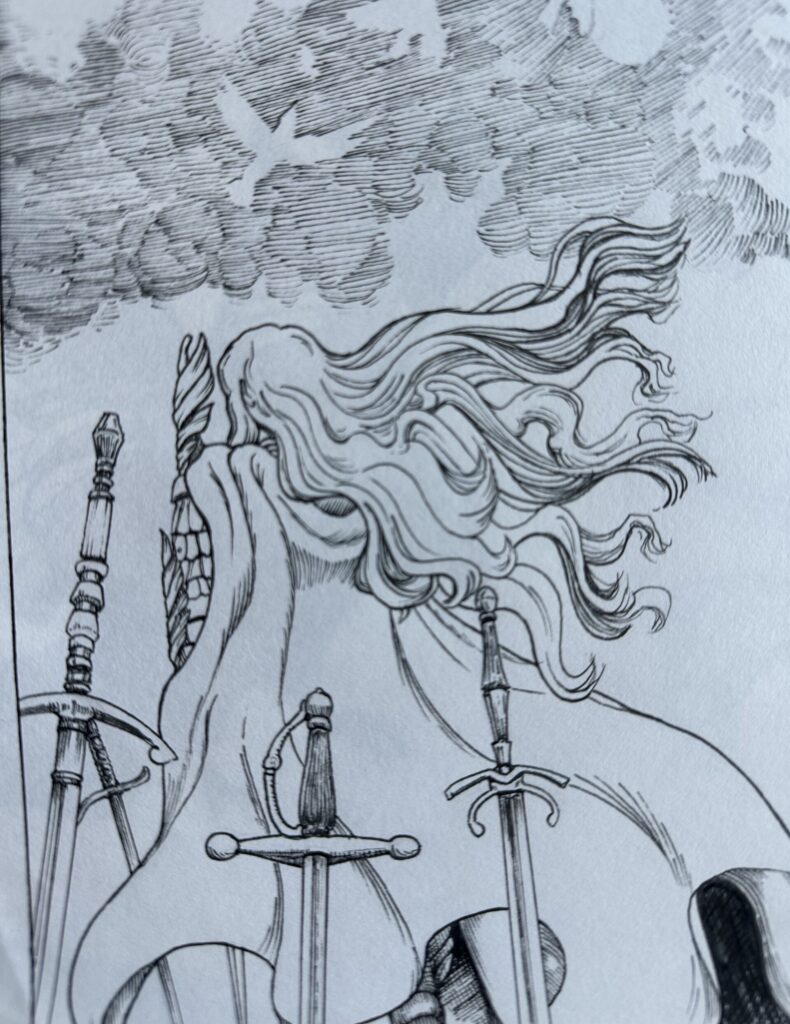
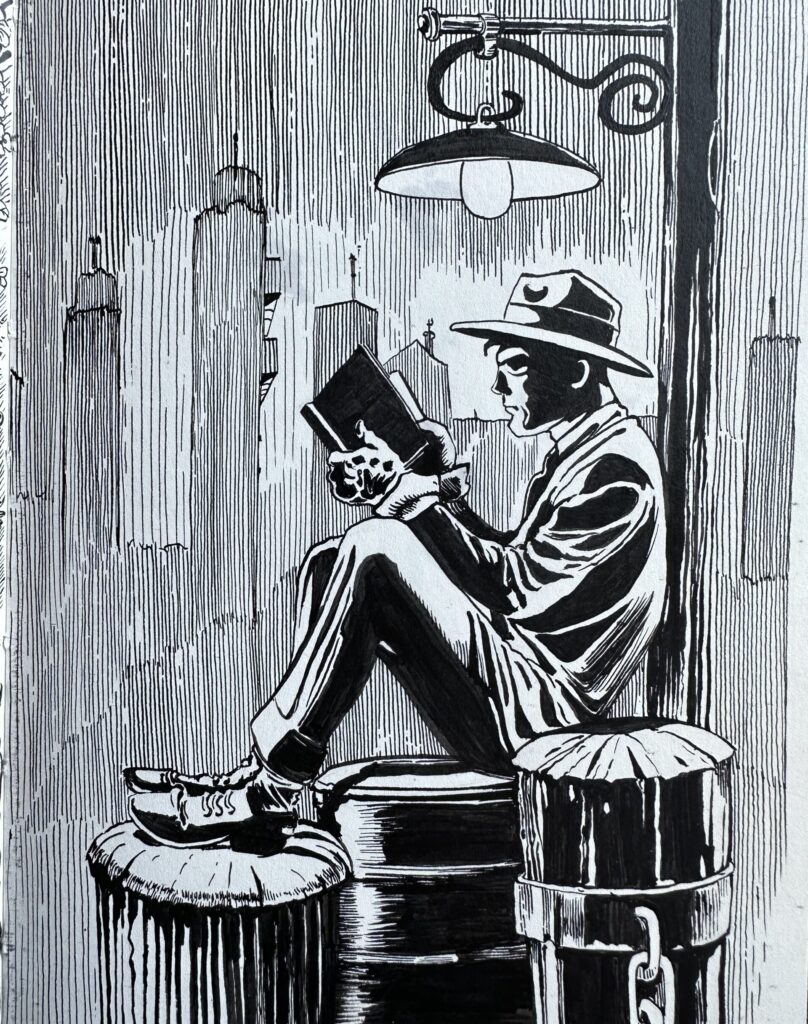
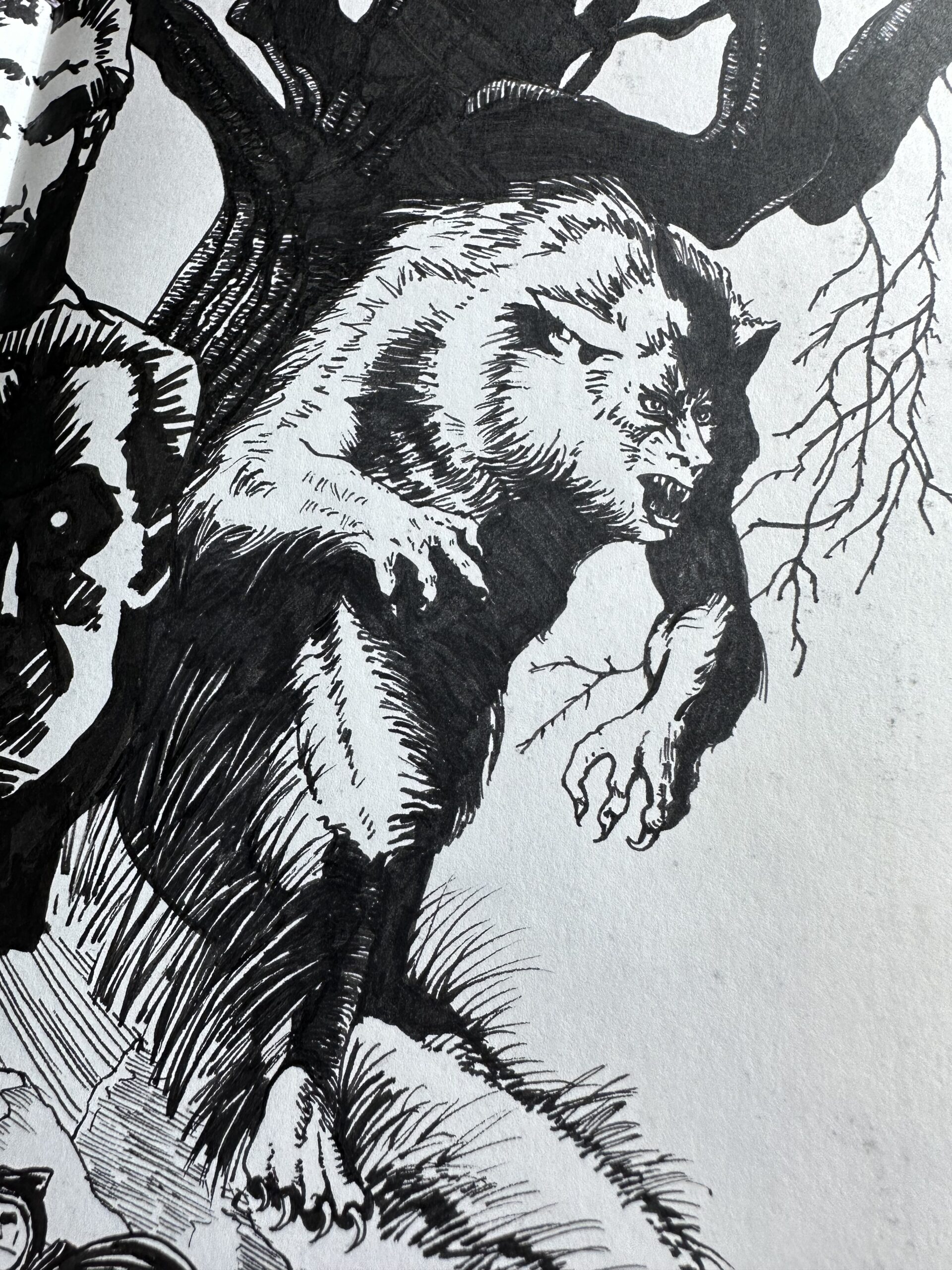

📚 Want more pen and ink drawing tips? Read this article.
Exercise 03 – Trace
Tracing informs us of how the master executed their strokes.
This exercise provides a straightforward way to practice line control as well as high-quality marks.
I like tracing because I don’t always have time to do a pencil drawing from scratch in order to practice my inking techniques.
Tracing allows you to reach a higher volume of repetitions – it’s a shortcut to the inking stage.
Below is an example of my tracing of a drawing by Moebius:
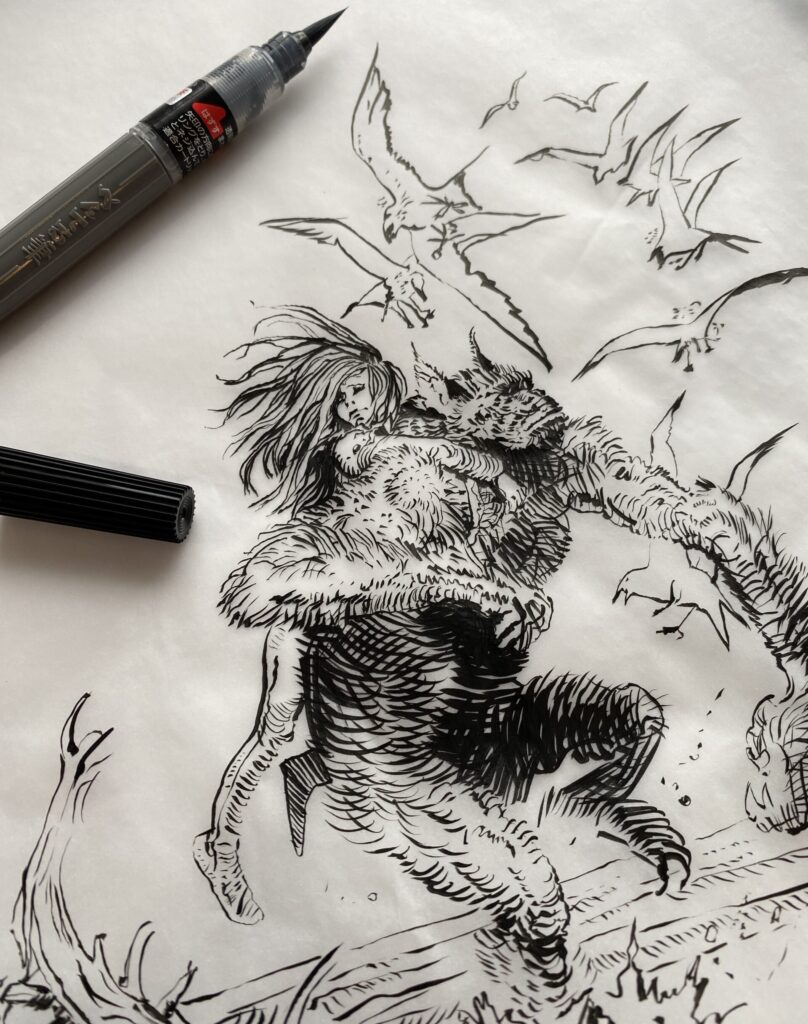
However, if one of your objectives is to improve drawing skills then tracing is not the best means to achieve this.
As a beginner, it’s more beneficial to learn to draw from observation of life (live or photo references) as to build a mental library over time.
Pentel Arts Color brush with pigment ink
Some creatives feel strongly that tracing is a form of cheating in any context. I view it as just a learning method to improve the execution of my inkwork.
“Copying from successful works of art is a way to connect with the thought process, the techniques, the choices that the previous generations of historically famous artists made.”
– Ron Lemen
Feeling ambitious? Impose a time constraint.
A clicking clock adds an element of difficulty. Aim for a 15-to-30-minute range per tracing exercise.
🎨 Visit my FAQ page for the full list of tools, materials, and supplies I use in my art studio.
Exercise 04 – Integrate
Now we can integrate what we’ve learned into our own work.
Rather than starting a new project, I chose to rework a piece from a year ago.
Applying the learnings from my studies of Booth, Wrightson, and Miura, I began the process with a self-critique and took note of:
- lack of volume, depth
- unconvincing shapes
- inconsistent line treatment
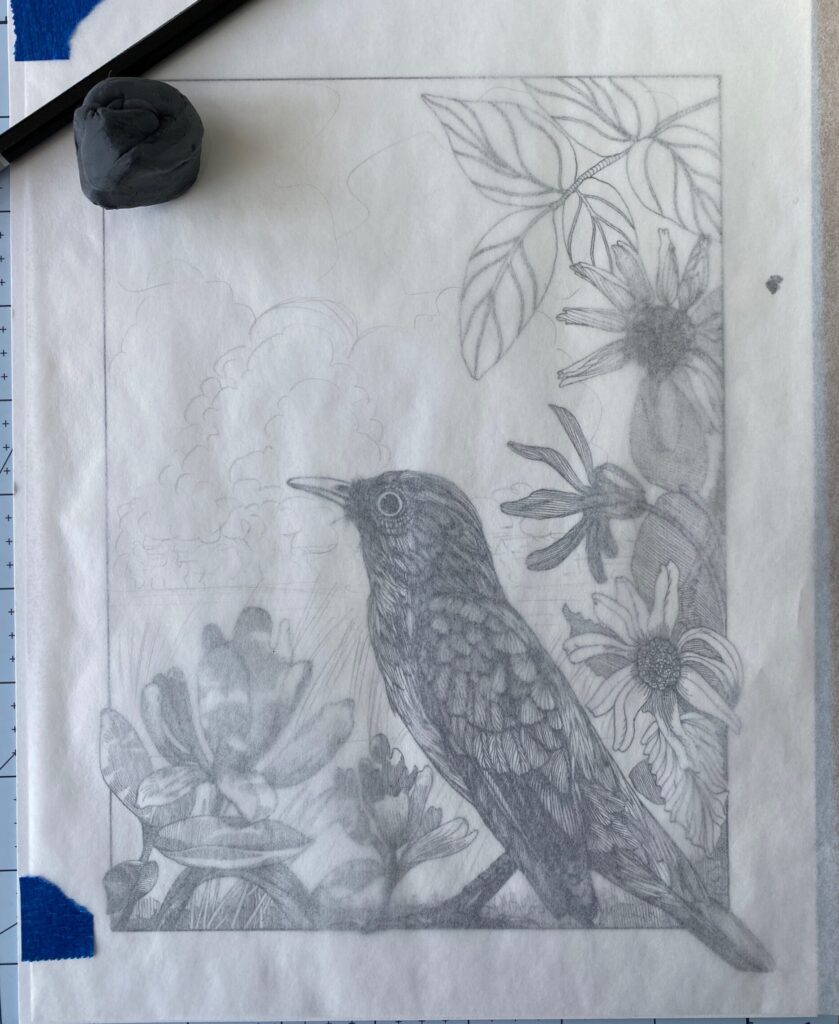
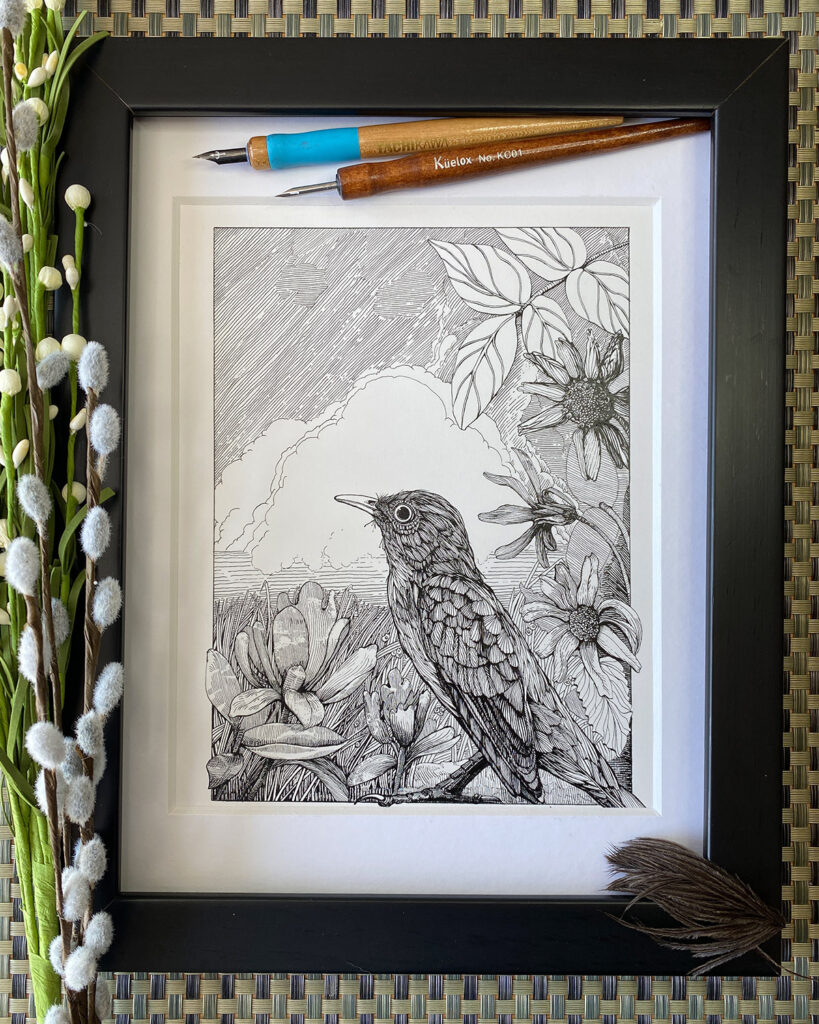
Re-assessing the final piece, I noted that the key issues were, for the most part, addressed.
The key takeaway from this exercise is that integrating our learnings is continuous as we repeat the process over time.
In retrospect, below are additional insights to note about reworking a piece:
| Advantages | Disadvantages |
| quicker than starting a new one | cannot change/delete existing lines |
| more direct “before and after” comparison | some fixes can be more problematic than starting anew |
I hope that you are inspired to study your favourite masters and apply these four exercises to your future or past projects.
Remember to follow my work on Instagram and Pinterest where regularly I post process videos, new artwork, tips, and behind-the-scenes of running a small art business.

Want a template?
This 13-page PDF checklist walks you through the process of conducting a master study based on your learning objectives. It includes:
- Self-assessment guides
- Exercises
- Definitions of the art fundamentals for pen and ink
- Resources
🎨 To find more of the pen and ink supplies you want, visit the Tools page.

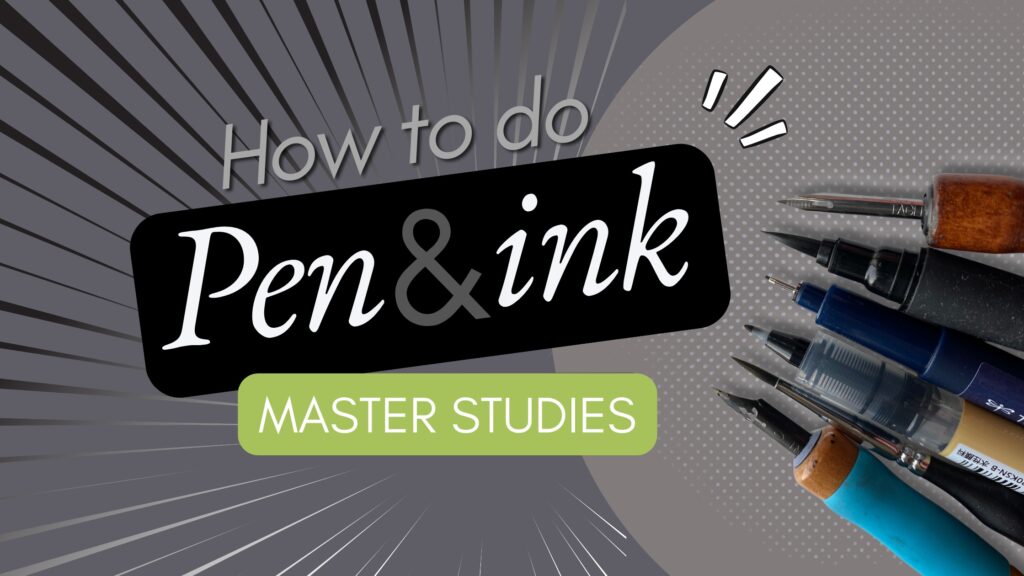




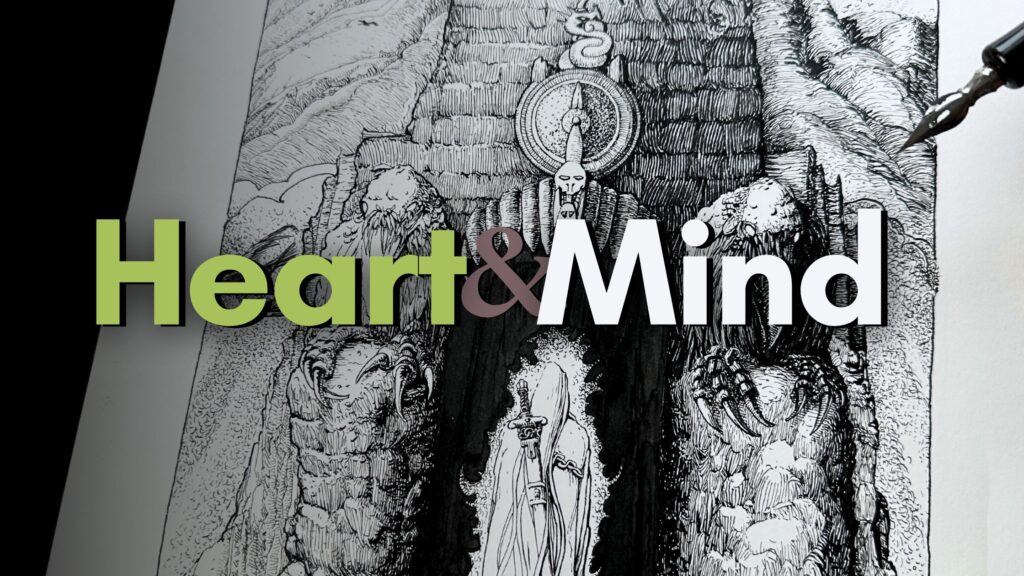
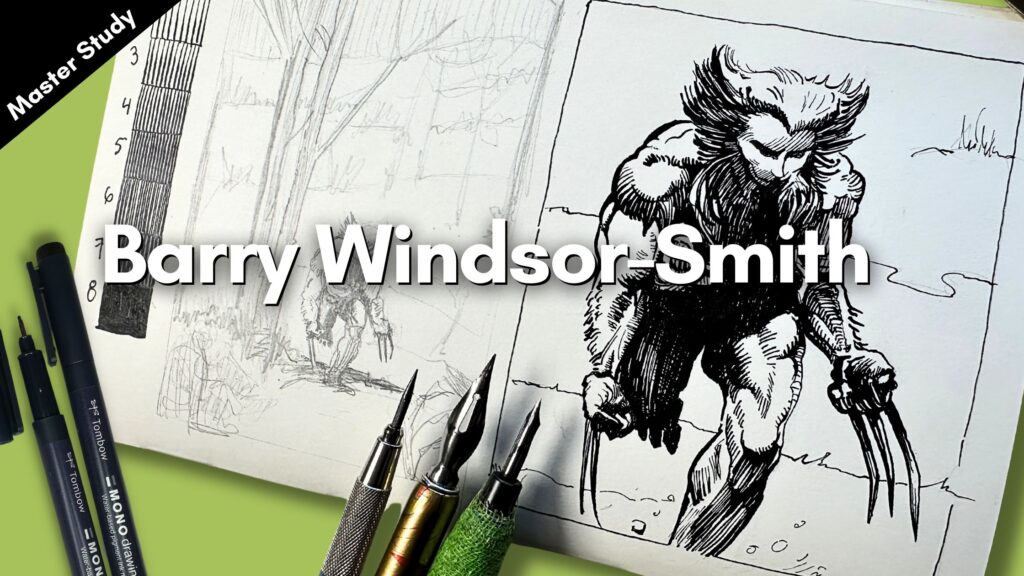
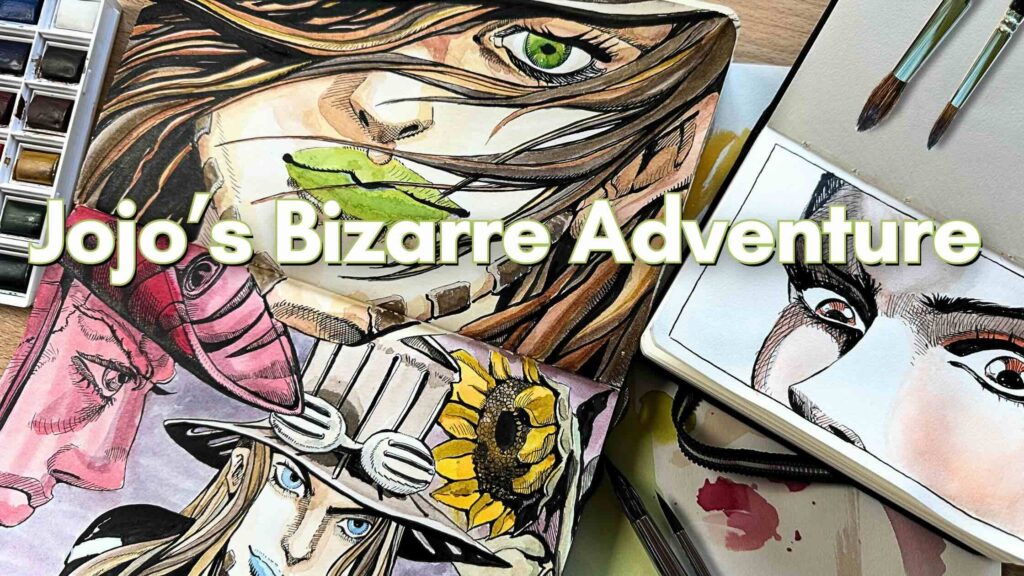
Thank you so much for this insightful look at your process!
Glad that you enjoyed the article! All the best Michelle! 🙂
The video and article gave me an “ah ha” moment and we’re tremendously helpful.
Thank you 😊
“ah ha” moments are the best! Thanks for sharing your thoughts Lisa 🙂
Wonderful post. In this fast, paced, like fueled race to social media it is hard to slow down and do what you have described (and have done well). I remember finding an image of Albrecht Dürer’s The Knight, Death and the Devil in an old encyclopedia and the line work amazed me. I didn’t know it was a wood cut (or what that meant at the time) but it inspired me to try so long ago. One of the masters I enjoy if not directly in ink as such I’ll have to see if I can pause and do a you have.
That’s great to hear that you are also a fan of Albrecht Dürer, what a classic!
Absolutely enjoying your blog, it’s like I’ve gone down a rabbit hole and can’t get enough! I stumbled across your work on IG and cannot thank you enough for all the insights and learnings that you share.
Thank you
That makes me happy! Thank you for taking the time to visit my blog, read, and comment on the articles. I really appreciate your kind words, and hope that these resources are helpful to you.
Hello Chloé
I’m enjoying discovering you, your work and especially your approach on improving your skills.
I find myself at a cross road, where I want to step up my skills in preparation to my retirement and just not sure what I want it to be.
Your blog has helped put many things in perspective on how I can get there, but I do have a question.
What makes you choose your subjects?
I’m glad to hear that the content on my blog and YouTube are helpful with your skill preparation, Chantal. To answer your question, I choose subjects that are “do-able” within my capabilities yet still challenging enough to help me make gains towards my objectives. I’ll post an article on this soon, thanks for the question and all the best with your pen and ink projects.
Hi, I’m super happy I found your site! Your content is super helpful 🙂
May I ask, do you have any suggested books for master ink artist images? I’m new to making art and don’t really know the masters. I kept borrowing Guptill’s “Rendering in Pen and Ink” from the library and finally buckled and bought it. It has many great ink drawings from various artists, but as it is an instructional book I’d love a more comprehensive resource for the masters in this art, if there is such a thing. Many thanks!
I’m glad that you’re enjoying the website. There are a few more books listed on my FAQ page, though I also like to browse at the library as you did, and on Amazon, where you can sometimes take a look at the inside pages.